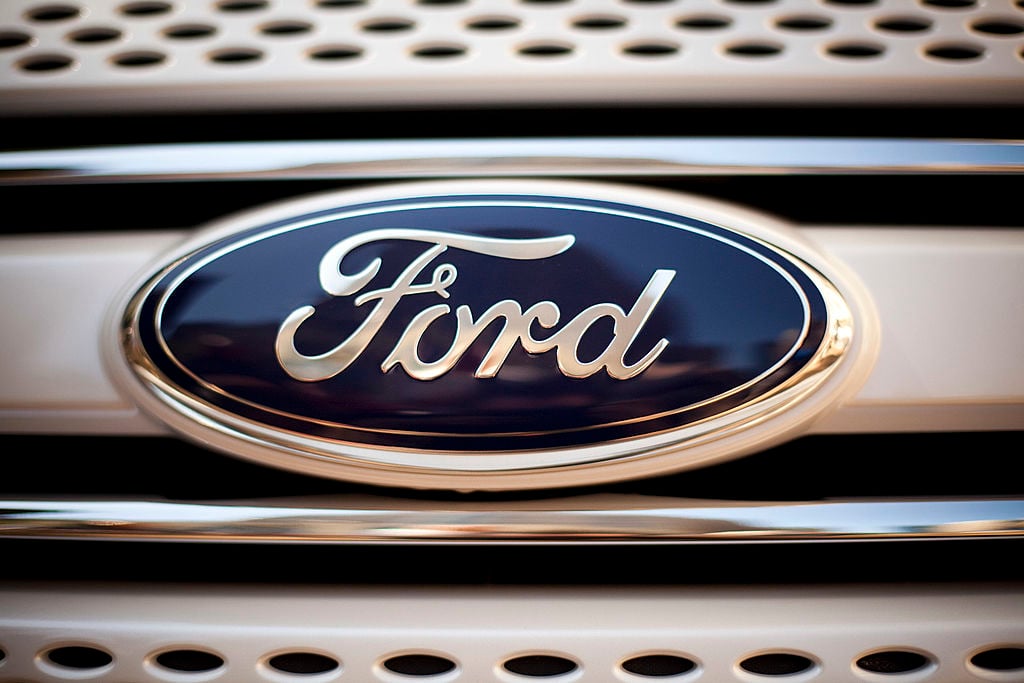Ford Motor Company (F 1.00%) said that it has issued three series of high-yield bonds, raising a total of $8 billion, after reporting that it lost $2 billion in the first quarter with its factories shuttered amid the coronavirus pandemic.
This was the company's first debt offering since it lost its investment-grade credit status on March 26. It may have been helped by a Federal Reserve Bank program intended to backstop debt offerings by so-called "fallen angels," companies that have lost investment-grade status since the pandemic's onset in mid-March.
Here's a look at what Ford did, and how it'll help Ford bolster its cash to weather the pandemic and restart its factories when the time comes.
About Ford's debt offering
In a filing with the Securities and Exchange Commission (SEC) late on Friday, Ford revealed that it sold three different series of bonds with total principal amounts of $8 billion.
- The first series, totaling $3.5 billion in principal, will pay 8.5% interest and mature in April of 2023.
- The second series, also totaling $3.5 billion in principal, pays 9% interest and matures in April of 2025.
- The third series, with $1 billion in total principal, pays 9.625% interest and matures in April of 2030.
Interest payments on all three series are due twice a year, in April and October, starting on October 22, 2020.

In 2006, Ford pledged almost everything it had -- including its headquarters -- as collateral in return for emergency funding. It didn't have to do that this time around. Image source: Ford Motor Company.
Was Ford's bond issue a surprise?
Not really. Ford hinted on Monday that it might seek to raise additional cash. My guess is that the Fed's move to backstop fallen-angel issues opened a door for Ford to raise cash at a not-unreasonable price. The interest rates on these notes are high, but not insanely high -- and importantly, Ford didn't have to put up any collateral.
Did Ford have to put up collateral for these new bonds?
No. These new bonds are unsecured, meaning that Ford didn't have to pledge any collateral to issue them.
Didn't Ford have to pledge collateral for its line of credit?
Not quite. Ford revealed in a separate SEC filing on Friday that some of its subsidiaries had to provide so-called "unsecured guarantees" to back up its credit line. Unsecured guarantees aren't collateral; they're prioritized promises to pay if Ford goes into bankruptcy.
Here's the background: Ford drew down $15.4 billion in cash from a pre-existing credit line in March. Under its loan agreements, certain Ford subsidiaries were required to provide these unsecured guarantees if Ford's credit rating fell below investment-grade, which it did when Standard & Poor's cut it to BB+ on March 26.
Put simply, it means that if Ford were to go bust, its credit-line backers would be paid before the holders of these new bonds got paid. Ford hasn't pledged any actual assets here.
How much cash does Ford have now?
Ford said on Monday that as of April 8, it had about $30 billion in cash on hand, including the $15.4 billion that it borrowed from its credit line. With this additional $8 billion (minus the bankers' fees), Ford now has roughly $38 billion -- minus whatever it has burned in the last 10 days, of course.
How quickly is Ford burning cash?
We don't know exactly. But here's what we do know:
- As of December 31, 2019, Ford had $22.3 billion in cash.
- On March 19, Ford borrowed $15.4 billion in cash from its credit line.
- On April 8, Ford said that it had about $30 billion in cash.
If we do the arithmetic, we see that between the end of 2019 and April 8, Ford's total cash decreased by $7.7 billion. But keep in mind that much of that was probably due to the quick unwinding of Ford's working capital after its factories were idled.
Here's an example to help understand what that means: Ford, like most automakers, records revenue when vehicles are shipped from its factories to dealers. When its factories were shut down due to the pandemic, it stopped recording revenue -- but it still had some big bills to pay, for things like the parts it had used to manufacture the vehicles it had shipped earlier in the month. Normally, it would pay those bills out of incoming revenue, and all would be well. But with no revenue coming in, it had to dip into cash to pay its suppliers.
But we can't extrapolate a burn rate from that, because it was a short-term thing. Ford won't have to pay those parts bills on an ongoing basis while its factories are closed, because its suppliers have stopped shipping parts for the time being.
Ford still has ongoing expenses, of course -- salaries and benefits for its employees, for instance. But its ongoing burn rate will be much lower than it was in the first few weeks after its factories closed. (Note that it will probably need to spend some extra cash up front to get its factories restarted, when the time comes.)
I expect that CFO Tim Stone will give us a clearer picture of Ford's cash-burn rate during Ford's first quarter earnings call on April 28.
How long can Ford hold out?
Ford said on Monday that it had enough cash to stay afloat at least through the end of the third quarter, even if it can't restart any of its idled factories outside of China before then. (Ford's Chinese factories restarted in late March, after the pandemic subsided there.) The extra $8 billion probably gives it more breathing room.
What does this all mean for Ford investors?
I think CEO Jim Hackett saw an opportunity to buy some insurance (in the form of extra cash) at a reasonable price that might not be available later on, and took it. I think the $8 billion that Ford raised with these bond issues covers its working-capital unwind, and will help give it breathing room if it has to wait a long time before restarting its factories.
Long story short: It was probably a smart move for Ford.






